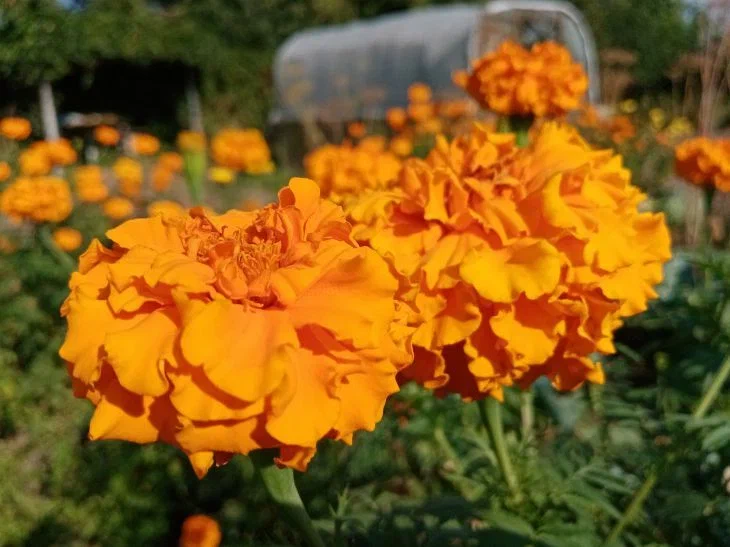Imagine: you plant one inconspicuous flower in a garden bed, and all the insects run away from your plot as if from fire.
Sounds like a fairy tale? But it's reality.
Agronomists have been hiding the truth for decades, because otherwise the multi-billion dollar pesticide market would collapse.

We are talking about marigolds. These bright "lights" emit phytoncides that aphids, Colorado beetles and even mole crickets hate at the genetic level.
Plant them around the perimeter of the garden, between the potato and cabbage beds, and pests will bypass your harvest.
Marigold roots cleanse the soil of nematodes, and in the fall the stems can be chopped up and buried as a natural fertilizer.
But there is a nuance: not all varieties are equally effective. Choose marigolds (Tagetes patula) - their smell is the most pungent.
And don't expect instant results: the protection works as the flowers grow. But in a month you'll forget what caterpillars look like on cabbage, and your neighbors will start to suspect that you're doing magic over your beds.
To make marigolds work as a shield, plant them densely - at least 5 plants per square meter.
If the pests are stubborn, pick the flowers, chop them up and pour boiling water over them (1 glass per liter). After 24 hours, spray the affected plants with the infusion - even the codling moth will not withstand this attack.
For greenhouses, use dried marigold stems: place them between tomatoes, and the whitefly will disappear.
Surprisingly, these flowers even save you from moles - their roots secrete substances that the blind pests hate.
And if you plant marigolds next to onions, they will stop rotting due to bacteria. Bonus: the flowers attract ladybugs, which will eat the remains of aphids.
Just don't remove the faded inflorescences - they contain seeds ripening for next year.
And yes, marigolds do not like shade - the more sun, the more fierce their "aroma" for pests. It is proven: where these red guards bloom, chemicals become unnecessary.
